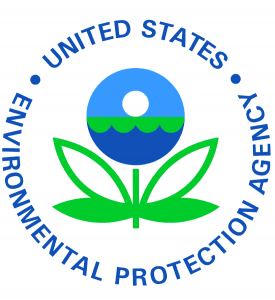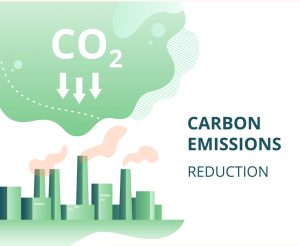January has been a busy month for the Fifth Circuit, which has issued a number of significant rulings.
Deployment of SMRs: Key Market Trends for Consideration
Any strategy for the successful deployment of small modular reactors (SMRs) must thoroughly consider the current trends affecting the burgeoning market for SMRs. In 2019, the three major trends shaping this market were the large number of SMR designs, interest in SMRs in both mature and emerging markets, and factors impacting SMR financing.
Environmental and Regulatory Highlights of the Fall 2019 Unified Agenda of Regulatory Actions
 In late December, the Office of Management and Budget (OMB) released the “Fall 2019 Unified Agenda of Regulatory Actions” just a few days before the Calendar turned to the year 2020. (It should be noted that the Spring Agenda was not released until June 24, 2019.) Individual agency agendas were published in the Federal Register by several agencies and executive departments on December 26, 2019. The entire agenda, which is a survey of all current and projected rule-making actions that federal agencies and departments are planning over the next 12 months, is available at such government websites as regulations.gov. The Agenda provides valuable insights into the actions these agencies believe to be most important. This survey will largely concentrate on environmental regulatory developments, although other matters are worth noting.
In late December, the Office of Management and Budget (OMB) released the “Fall 2019 Unified Agenda of Regulatory Actions” just a few days before the Calendar turned to the year 2020. (It should be noted that the Spring Agenda was not released until June 24, 2019.) Individual agency agendas were published in the Federal Register by several agencies and executive departments on December 26, 2019. The entire agenda, which is a survey of all current and projected rule-making actions that federal agencies and departments are planning over the next 12 months, is available at such government websites as regulations.gov. The Agenda provides valuable insights into the actions these agencies believe to be most important. This survey will largely concentrate on environmental regulatory developments, although other matters are worth noting.
The New Year Brings New Tenant Protections in California
 Effective as of January 1, 2020, the Tenant Protection Act of 2019, signed by Gov. Gavin Newsom in the fall of 2019, provides certain new protections for residential tenants in the State of California. In response to what the statute refers to as “the unique circumstances of the current housing crisis,” the new legislation prohibits residential landlords from terminating leases without just cause for tenants who have occupied the rented premises for 12 months or more, and restricts the amount by which landlords may increase rent, as summarized in more detail below. California’s adoption of this new legislation makes it the third state in the country to implement statewide rent restrictions, a trend that will likely continue to grow in the face of rising rental prices nationwide.
Effective as of January 1, 2020, the Tenant Protection Act of 2019, signed by Gov. Gavin Newsom in the fall of 2019, provides certain new protections for residential tenants in the State of California. In response to what the statute refers to as “the unique circumstances of the current housing crisis,” the new legislation prohibits residential landlords from terminating leases without just cause for tenants who have occupied the rented premises for 12 months or more, and restricts the amount by which landlords may increase rent, as summarized in more detail below. California’s adoption of this new legislation makes it the third state in the country to implement statewide rent restrictions, a trend that will likely continue to grow in the face of rising rental prices nationwide.
The G2G Year in Review: 2019
As we kick off the new decade, we wanted to share the top five most-read articles of 2019 from Gravel2Gavel. The most-read blog posts covered 2019 real estate and construction industry trends ranging from affordable housing to the new State Bill 35 (SB 35) to sustainability in modern real estate. Our posts provided deep insight and detailed case studies, and summarized hot topics that addressed the legal implications and exciting disruptions that are affecting the industry. We hope you enjoy the roundup:
EPA Will Soon Issue the Latest Revision to the Risk Management Program (RMP) Chemical Release Rules
 On November 21, 2019, EPA released a pre-publication copy of its Reconsideration of the revised Risk Management Program (RMP) Rules. In an accompanying statement, the agency noted that it has taken steps to “modify and improve” the existing rule to remove burdensome, costly and unnecessary requirements while maintaining appropriate protection (against accidental chemical releases) and ensuring responders have access to all of the necessary safety information. This action was taken in response to EPA’s January 13, 2017 revisions that significantly expanded the chemical release prevention provisions the existing RMP rules in the wake of the disastrous chemical plant explosion in West, Texas. The Reconsideration will take effect upon its publication in the Federal Register.
On November 21, 2019, EPA released a pre-publication copy of its Reconsideration of the revised Risk Management Program (RMP) Rules. In an accompanying statement, the agency noted that it has taken steps to “modify and improve” the existing rule to remove burdensome, costly and unnecessary requirements while maintaining appropriate protection (against accidental chemical releases) and ensuring responders have access to all of the necessary safety information. This action was taken in response to EPA’s January 13, 2017 revisions that significantly expanded the chemical release prevention provisions the existing RMP rules in the wake of the disastrous chemical plant explosion in West, Texas. The Reconsideration will take effect upon its publication in the Federal Register.
The Small Business Runway Act Takes Off in January
On December 5, the U.S. Small Business Administration (SBA) issued a final rule to implement the Small Business Runway Extension Act of 2018. In “Small Business Runway Act to Become Effective January 6, 2020,” colleagues Richard B. Oliver, David B. Dixon and Robert Starling break down exactly what this means for contractors seeking to determine eligibility as a small business for federal procurements.
Two Executive Orders Take Aim at Use of Guidance Documents
Not to be lost in the holiday hustle and bustle, two Executive Orders from October could, if fully implemented, significantly affect federal administrative law. In “Trump Issues Executive Orders to Rein In Use of Guidance Documents in Enforcement Proceedings,” colleagues Matthew W. Morrison, Mark E. Elliott and Anthony B. Cavender take a closer look at E.O. 13891 and E.O. 13892.
A Changing Climate for State Policy-Making Regarding Climate Change
 Issued by 13 federal agencies, the 2018 Fourth National Climate Assessment presented a stark warning on the consequences of climate change for the United States. The report predicts that if significant steps are not taken to rein in global warming, the damage will reduce the U.S. economy by as much as 10 percent by the end of the century. The report, which was mandated by Congress and made public by the White House, is notable not only for the precision of its calculations and bluntness of its conclusions—the 1,656-page assessment lays out the devastating effects of a changing climate on the economy—but also in how it conflicts with President Donald Trump’s environmental deregulation plan. U.S. policy efforts at the state and local levels are ramping up to address this complex topic. These include:
Issued by 13 federal agencies, the 2018 Fourth National Climate Assessment presented a stark warning on the consequences of climate change for the United States. The report predicts that if significant steps are not taken to rein in global warming, the damage will reduce the U.S. economy by as much as 10 percent by the end of the century. The report, which was mandated by Congress and made public by the White House, is notable not only for the precision of its calculations and bluntness of its conclusions—the 1,656-page assessment lays out the devastating effects of a changing climate on the economy—but also in how it conflicts with President Donald Trump’s environmental deregulation plan. U.S. policy efforts at the state and local levels are ramping up to address this complex topic. These include:
2019 Affordable Housing Credit Improvement Act Gains Steam with Bipartisan Support
 As 2019 winds down, the Affordable Housing Credit Improvement Act of 2019 is gaining momentum in Congress. The Act, which is aimed at expanding and strengthening the low-income housing tax credit, was originally introduced in 2016. The Consolidated Appropriations Act of 2018 adopted two key provisions of the original bill—a 12.5% increase to the housing credit ceiling for years 2018-2021 and the “income averaging” minimum set-aside election. The 2019 bill reintroduces many key provisions from the original bill, along with new provisions to further bolster the housing credit. As of the end of October, more than one-third of the House and one-fourth of the Senate have signed on to co-sponsor the bill. In summary, the key proposals in the 2019 legislation would:
As 2019 winds down, the Affordable Housing Credit Improvement Act of 2019 is gaining momentum in Congress. The Act, which is aimed at expanding and strengthening the low-income housing tax credit, was originally introduced in 2016. The Consolidated Appropriations Act of 2018 adopted two key provisions of the original bill—a 12.5% increase to the housing credit ceiling for years 2018-2021 and the “income averaging” minimum set-aside election. The 2019 bill reintroduces many key provisions from the original bill, along with new provisions to further bolster the housing credit. As of the end of October, more than one-third of the House and one-fourth of the Senate have signed on to co-sponsor the bill. In summary, the key proposals in the 2019 legislation would:




